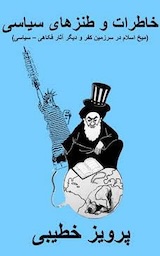Link
MajidNaficy 's Recent Links
The New Yorker: The French Perfumer Behind the Internet’s Favorite Fragrance
MajidNaficy | 3 hours ago
0 21
The New Yorker: The Disquieting Dogmas Behind Three Cat Controversies
MajidNaficy | 3 hours ago
0 20
The New Yorker: The End of Adoptions from China
MajidNaficy | 4 hours ago
0 21
Israeli strikes across Lebanon: Israeli military says hundreds of targets hit
Viroon | 2 hours ago
0 51
Category: None
Iran tried to send Biden campaign hacked info from Trump: FBI
Viroon | 2 hours ago
0 44
Category: None










Comments